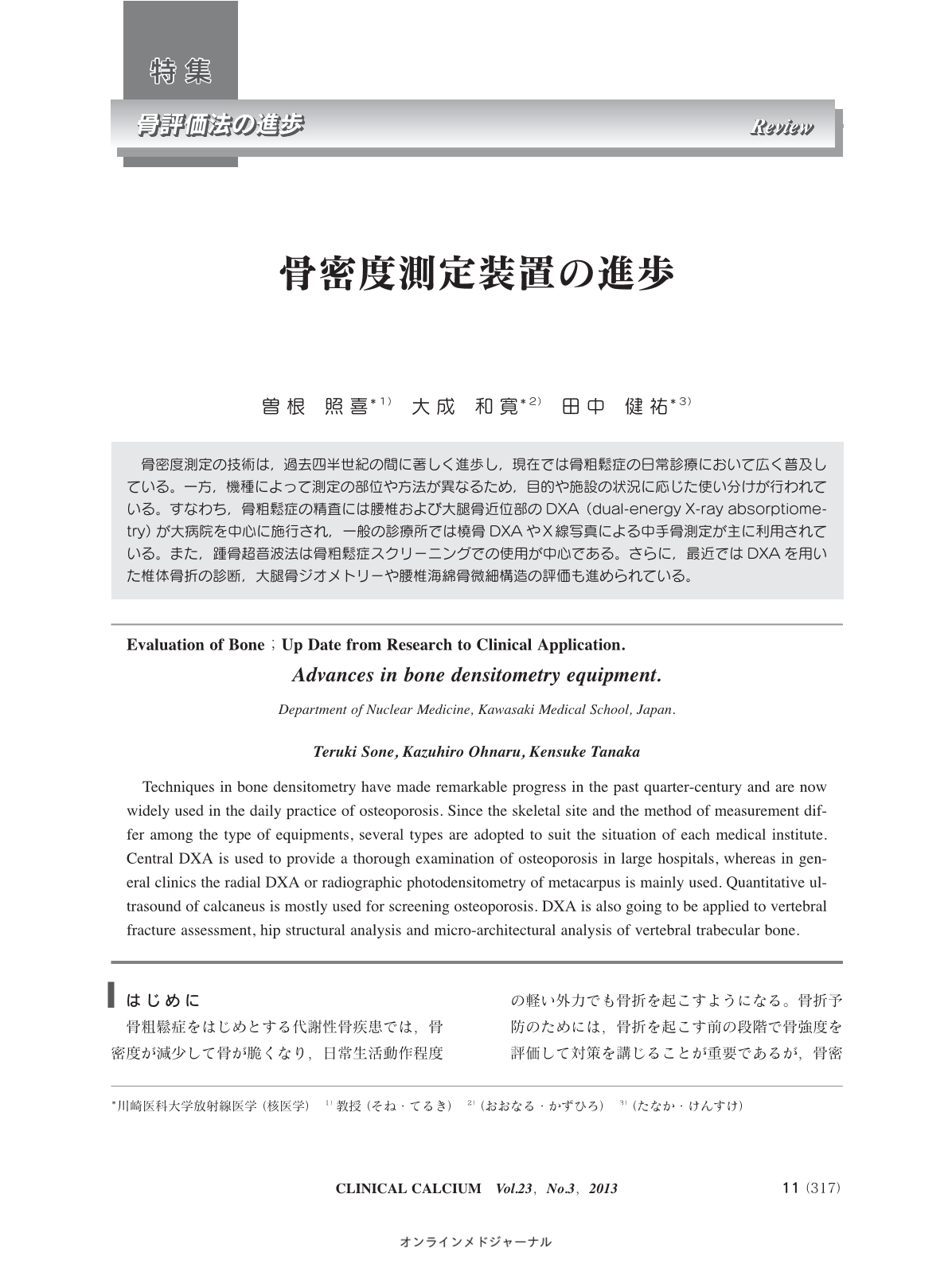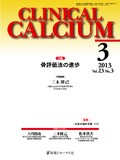Japanese
English
- 有料閲覧
- Abstract 文献概要
- 1ページ目 Look Inside
- 参考文献 Reference
骨密度測定の技術は,過去四半世紀の間に著しく進歩し,現在では骨粗鬆症の日常診療において広く普及している。一方,機種によって測定の部位や方法が異なるため,目的や施設の状況に応じた使い分けが行われている。すなわち,骨粗鬆症の精査には腰椎および大腿骨近位部のDXA(dual-energy X-ray absorptiometry)が大病院を中心に施行され,一般の診療所では橈骨DXAやX線写真による中手骨測定が主に利用されている。また,踵骨超音波法は骨粗鬆症スクリーニングでの使用が中心である。さらに,最近ではDXAを用いた椎体骨折の診断,大腿骨ジオメトリーや腰椎海綿骨微細構造の評価も進められている。
Techniques in bone densitometry have made remarkable progress in the past quarter-century and are now widely used in the daily practice of osteoporosis. Since the skeletal site and the method of measurement differ among the type of equipments, several types are adopted to suit the situation of each medical institute. Central DXA is used to provide a thorough examination of osteoporosis in large hospitals, whereas in general clinics the radial DXA or radiographic photodensitometry of metacarpus is mainly used. Quantitative ultrasound of calcaneus is mostly used for screening osteoporosis. DXA is also going to be applied to vertebral fracture assessment, hip structural analysis and micro-architectural analysis of vertebral trabecular bone.



